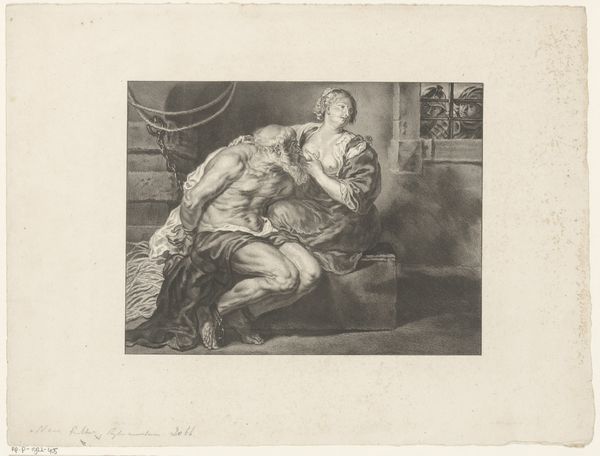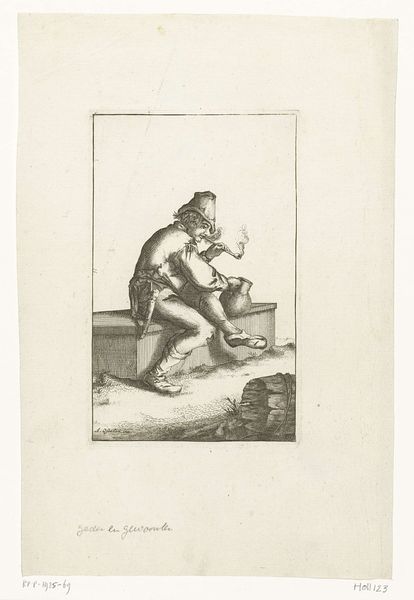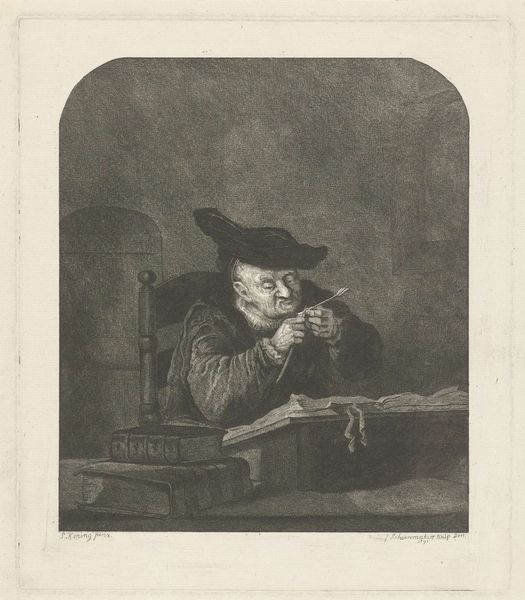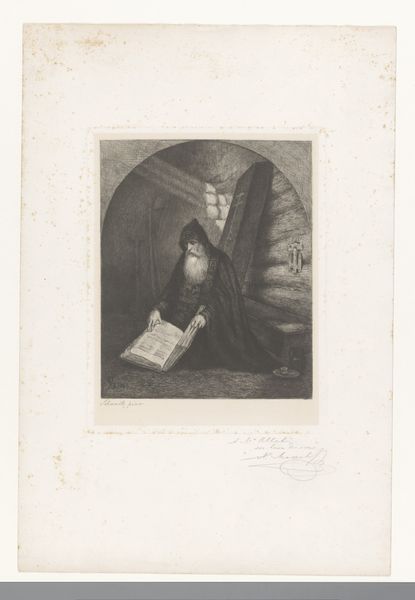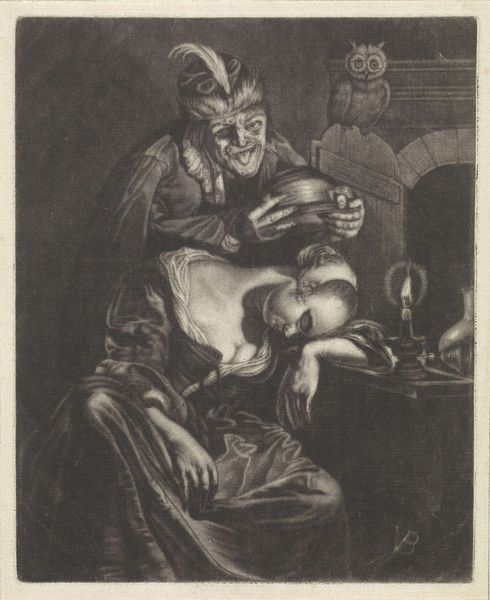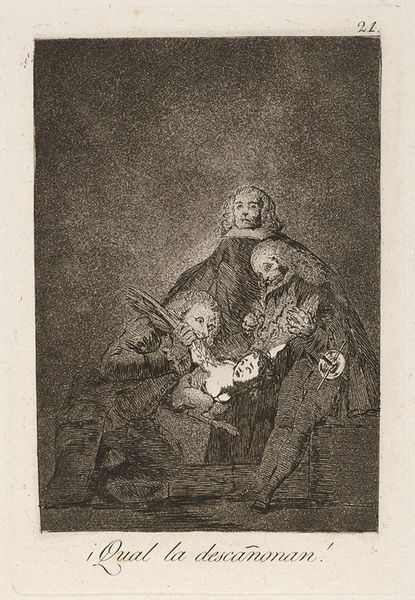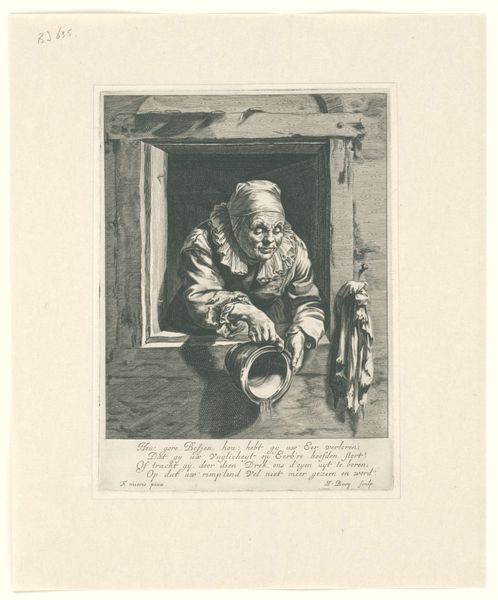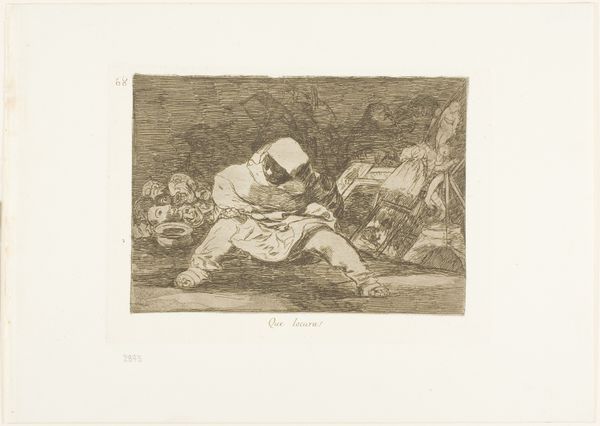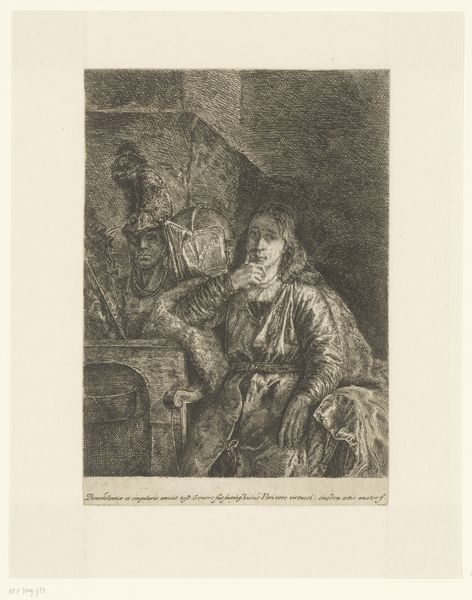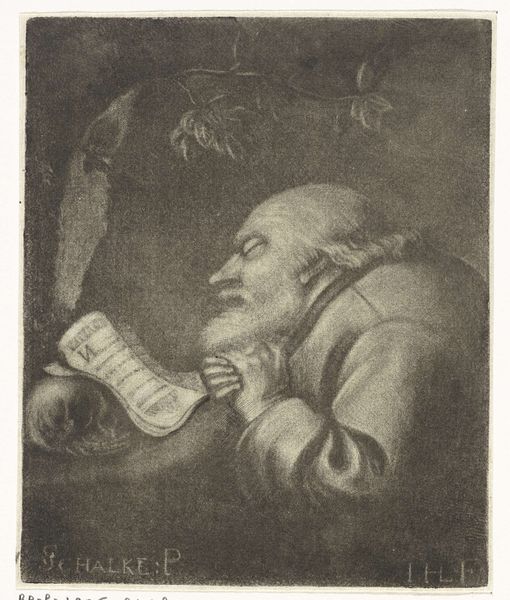
print, engraving
#
portrait
#
baroque
# print
#
vanitas
#
pencil drawing
#
history-painting
#
engraving
Dimensions: height 225 mm, width 187 mm
Copyright: Rijks Museum: Open Domain
Jacob Hoolaart created this print of a praying monk, possibly Saint Jerome, sometime in the 1700s. It’s made using etching, a printmaking process that relies on the corrosive power of acid. The plate, likely copper, would have been coated with a waxy, acid-resistant ground. Hoolaart then scratched his design into this ground, exposing the metal beneath. When the plate was immersed in acid, the exposed lines were eaten away, creating grooves. The depth of these grooves determined how much ink they would hold, and thus the darkness of the lines in the final print. Look closely, and you can see the subtle variations in tone and texture achieved by this painstaking process. This technique allowed for the relatively easy mass production of images, fueling the circulation of knowledge and ideas in the Enlightenment era. While seemingly worlds apart, etching and the era’s emerging industrial processes both relied on carefully controlled, repeatable actions. This print therefore speaks to a changing world, where craft, industry, and even religious devotion were being reshaped by new modes of production and consumption.
Comments
No comments
Be the first to comment and join the conversation on the ultimate creative platform.
